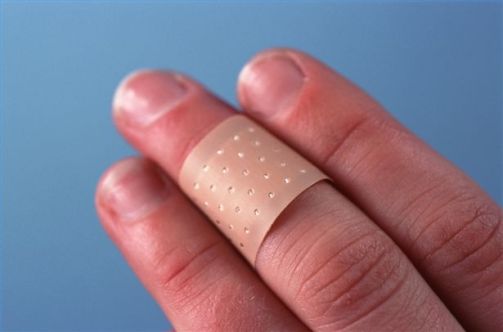In the medical world, there seems to be two vastly different approaches to treating patients (if there are more I have missed, please forgive me). One is focused on simply making the patient feel better as quickly as possible. This approach targets the symptoms that are bothering the patient and attempts to alleviate them. The other approach also focuses on making the patient better. However, the target of this approach is identifying and treating the underlying cause of the symptoms of which the patient is complaining. In our day-to-day lives, we are faced with many personal and relational struggles. We can choose either one of these two approaches in how we deal with those issues.
We typically want a quick-fix to any problem we are struggling with.
I do not know of anyone who honestly wants to take a difficult path when an easier one is also an option. When faced with pain, suffering, loss, a difficult decision, rejection, or unfair circumstances, we’d much rather press the “Easy Button” that was seen on commercials a while ago than to sort through all that’s involved. To allude to the medical example presented previously, when I am in pain, I’d much rather rely on the pain meds than to go through exploratory surgery that most likely would lead to months of recovery.
Band-Aids come in all shapes and sizes.
The quick fixes, or “Band-Aids”, we use in life struggles are numerous. They seemingly take care of the immediate symptoms that bug us. They temporarily cover up the wounds we have. Here are just some of my favorites:
1) Avoid the issue with others. Change the subject in conversation. Get angry at someone who brings it up and pull away. Surround yourself with people who have no clue what is really going on. Basically do whatever it takes to avoid the existence of a problem.
2) Numb yourself. Drink too much. Eat too much. Shut down emotionally in any way possible. In others words, find a way to dull any sense of pain, guilt, or other negative emotions associated with the problem.
3) Busy myself with many things. This one is exhausting, but effective enough in the short run to be tempting. By doing a lot of “stuff”, the problem is pushed into a corner somewhere.
4) Run away. This one may seem a bit extreme. However, it can become a seemingly viable option when the problem becomes more and more difficult to avoid. Running away may be moving to a new location, quitting a job, leaving a spouse, or a host of other ways to put physical distance between ourselves and anything that threatens to force the issue.
Snatching a Band-Aid off hurts!
We have all had to wear a Band-Aid at some point, so we all know that it stings to pull it off. With the Band-Aids (quick fixes) we use for life struggles, it is no different. When we choose to quit avoiding the issue and face it, it often hurts. It requires a lot out of us to toss aside the coping mechanisms such as numbing ourselves and busyness. However, it is the only way to quit targeting the symptoms and begin targeting the underlying cause, which will most likely NOT be a quick fix.
Choosing to remove a Band-Aid is a step of faith.
Facing issues we have purposely been avoiding will be a challenge. Obviously, there are reasons we have been avoiding them. For one, fear is always involved. If it were easy, we would have already done it. Regardless of the issue, there is always a common thread. Surrender. We must surrender control when choosing to stand firm instead of running away, committing to do what it takes to remove the things we numb ourselves with, choosing to be still instead of continuing to be busy, and facing people that may say things we do not want to hear. Surrendering control and trusting God go hand in hand. Giving up our Band-Aids is like targeting or opening up a wound and saying, “Okay Father. I give up. No more covering this mess up. Take over here. Do what you need to do to heal me…really heal me”.


